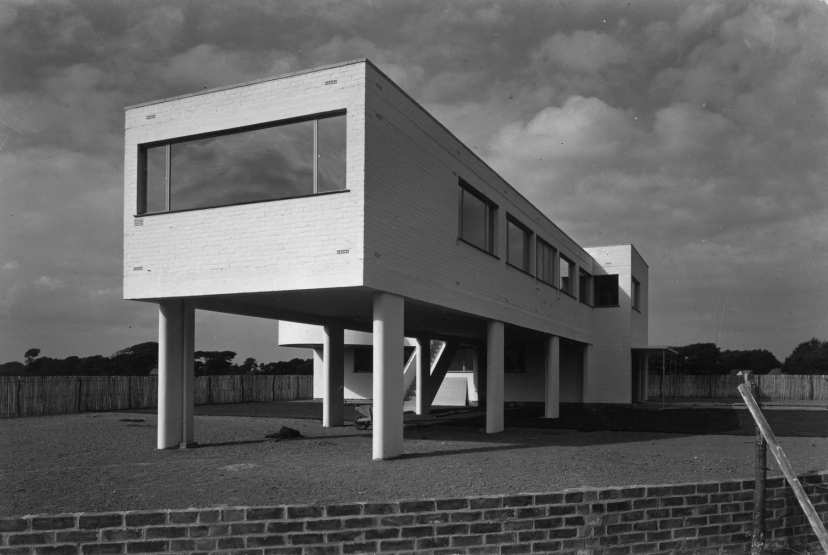Unveiling Marcel Breuer: 10 Surprising Facts You’ve Never Heard

Marcel Breuer was a Hungarian-born modernist architect as well as a furniture designer. At the peak of 20th-century design, he was one of the world’s most popular architects due to his personal style of architecture that was a translation of the sculpture vocabulary he developed in the carpentry shop at the Bauhaus. His work includes art museums, libraries, college buildings, office buildings, and residences. His predominant style displayed brutalist tendencies, applying new forms and uses to newly developed technology and materials creating art and architecture expressive of the industrial age. His work in both architectural and furniture design was acclaimed across the world, but some things about this renowned architect are less broached and hence less known.
Also Read:- Arte Moreno American Businessman Bio, Age, Networth & Family
1. Known as the father of modern furniture designs | Marcel Breuer
Although his real passion was architecture, Marcel Breuer was widely known for his furniture designs. He gave the world some of the first tubular steel furniture examples that got him recognized globally. In fact, his chairs – Wassily chair and Cesca chair – were amongst the ten most important chairs of the 20th century. Akin to his architectural creations, his furniture was the exemplification of the integration of art and industry. His fascination with modular construction and simple forms is lucidly intelligible in each of his works.
2. He was a college dropout
After graduating high school in Pecs, Hungary, Breuer was offered a scholarship to study painting in the Academy of Fine Arts in Vienna. But the atmosphere of the academy could not meet his expectations, leading him to dislike the place immediately. Soon he abandoned the course to work under apprenticeship with a Viennese architect and joined the cabinet-making shop of the architect’s brother. He later referred to his days in Vienna as some of the “unhappiest in his life.”
3. He was one of the youngest students at the bauhaus | Marcel Breuer
The Bauhaus, established in 1919, has a mission to integrate functional design to principles of art. Breuer was one of the first and youngest students to enter Bauhaus at 19 years of age after one of his friends handed him a brochure from the same. The head architect, Walter Gropius, noticed Breuer’s skills and promoted him as the head of the carpentry shop within a year. During this time, Breuer was able to produce his trademark “African” chair series (1921) and “Slatted” (1922).
4. His iconic Wassily chair was inspired by the form of bicycle handlebars
Wassily chair or Model B3 chair that lives as one of Marcel Breuer’s most significant creations was designed in 1926 at the Bauhaus. The concept of this chair’s distinctive frame was influenced by the curving shape and form of a bicycle handlebar.
The durability of a bicycle he owned intrigued him, which led him to transpose the same characteristics in his furniture and to make a chair with similar bending of steel tubes. It was the first time an armchair was reduced to its most basic structure, making it one of the most spectacular works of the Bauhaus.
5. His first major commissions came only in the year 1953 | Marcel Breuer
Marcel Breuer lived off his design fees in the late 1920s and early 1930s when architectural commissions were few and far between. 1953 marked a significant breakthrough in Breuer’s career as an architect, with him receiving two of his most major global commissions. The first one was the ‘World Headquarters’ for UNESCO, which he co-designed with Bernard Zehrfuss and Pier Luigi Nervi in Paris. And the second was a series of projects from St. John’s Abbey and University in Collegeville, Minnesota, completed in collaboration with Hamilton Smith.
6. He served as an instructor at Harvard and Bauhaus
Breuer’s life as an instructor was one of his most important legacies apart from all of his achievements. At the Bauhaus, he was first a student and then later the leader of the furniture design workshop. Then he joined Walter Gropius at Harvard University, an event that laureled his reputation as a teacher. His students at Harvard, including I.M. Pei and Philip Johnson, grew to be some of the most successful architects of the post-war era.
7. Breuer’s studio produced more than a 100 buildings
Breuer’s most prolific years came after he moved to New York in 1946, after which he created some of his architectural work he is most remembered for. St John’s Abbey Church in Minnesota, the Metropolitan Museum of Art (now the Met Breuer), and the Atlanta-Fulton Central Public Library are a few of the 100 buildings completed by Breuer’s studio during this stellar phase of his career. These buildings used a robust and formal composition of concrete and stone, underlining his signature modernist style of architecture.
8. He brought the butterfly roof to the united states | Marcel Breuer
Marcel Breuer used his “binuclear” house concept in his Geller House project in Long Island, New York, USA. It was the first residence to feature this design: two wings, one a living-kitchen-dining area, the other a sleeping area, connected by an entrance hallway and topped by a butterfly roof, two opposing surfaces sloping inward toward a central drain that runs through the house. He modified the same for the McComb house, keeping the butterfly roof but adding a second story to one side of the structure, creating a parents’ bedroom upstairs on one side, and bedrooms for the children on the other.
9. He had a rational approach to design at a time of expressionism
Surrounded by expressionism, Breuer became an early advocate of a more rational design approach, which the Bauhaus became known for later in the 1920s. Breuer’s work in multiple ways is an epitome of the Bauhaus’ principles of the art meeting industry. These ideals are lucid in both his furniture and architectural creations, which actively involved new technology of that era. Throughout his career, he championed and materialized rationalist designs as practical solutions for life in the twentieth century.
10. Versatility in usage of materials | Marcel Breuer
Breuer was a pioneer of International style when it came to the extensive usage of materials like steel, glass and concrete. He was a prominent figure in the emergence of brutalism and his more recognized works are heavy, massive structures that speak of the post-industrialization era. But this dominant tendency was something he countered in small-scale houses in which a sensitive handling of traditional materials like wood and brick can be observed.







